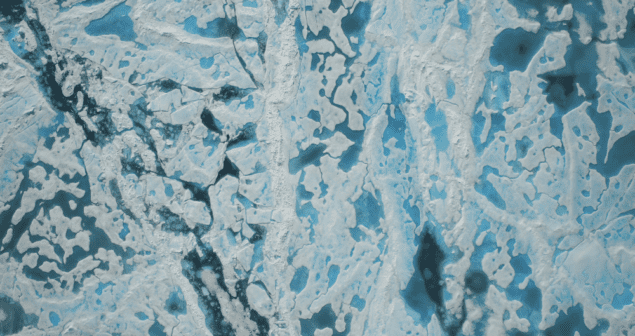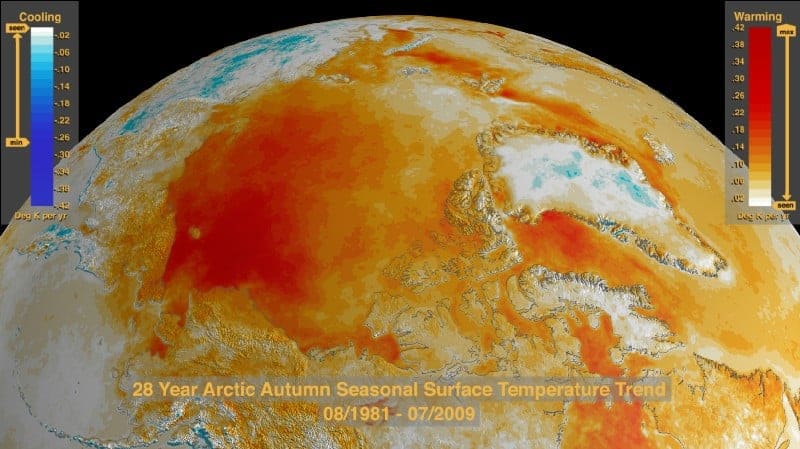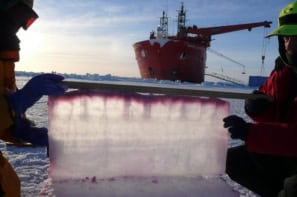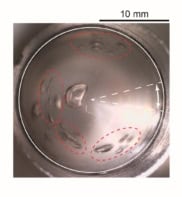
A new computer model can simulate how ponds of meltwater form and evolve on the surface of Arctic sea ice with robust accuracy. Created by Predrag Popović and colleagues at the University of Chicago and the Massachusetts Institute of Technology, the model uses just two parameters to predict the locations, shapes and sizes of the ponds. The work could greatly improve predictions of how the melting of Arctic sea ice will respond to climate change in the coming decades.
When Arctic sea ice starts to melt in the spring, ponds of meltwater form on its surface. These ponds are less reflective than ice and therefore absorb more energy from the Sun. This extra heat further melts the ice around the ponds in a positive feedback loop that accelerates warming in the Arctic. Aerial photographs have revealed that the shapes and sizes of the ponds play an important role in the strength of lateral melting of ice by pond water, making their geometry and distribution crucial factors to consider when predicting the future extent of Arctic warming.
Melting underestimated
Currently, computer models that simulate the formation and evolution of ponds are complicated and incorporate many different physical processes. The simulations are able to calculate pond coverage on the scale of the Arctic as a whole, but are less suitable for modelling pond geometry on smaller distance scales. Recently, these shortcomings have meant that the acceleration of sea ice melting due to climate change has been severely underestimated.
Sea ice cover has been shrinking, and significantly faster than our models predict, so we’re looking for where the discrepancy might be
Predrag Popović, University of Chicago
To find answers, the team created mathematical model of pond geometry and distribution that is much simpler than previous incarnations. Their algorithm randomly places overlapping circles on a plane to represent sea ice – with the voids in between circles representing the ponds. While the circle centres were placed with equal probability across the plane, their radii were randomly drawn from a simple probability distribution function. The two input parameters of the model are the average radius in the distribution, and the fraction of the plane covered by ponds.
Accurate reproduction
To test their model, Popović’s team analysed hundreds of aerial photographs of melting sea ice at different stages, using a machine learning algorithm to identify regular patterns in pond formation. By comparing their computer-generated ponds with the images, the researchers confirmed that their model could accurately reproduce the geometry and abundance of meltwater ponds throughout the melting season, from scales of metres to thousands of kilometres.

Melting ice amplifies Arctic warming
Popović’s Chicago colleague Dorian Abbot says, “You can get similar characteristics using other mathematical methods, but the void model is much simpler and just as accurate”. “Knowing this simple technique can accurately describe ponds could improve our predictions of how sea ice will respond as the Arctic continues to warm.”
The model is described in Physical Review Letters.



